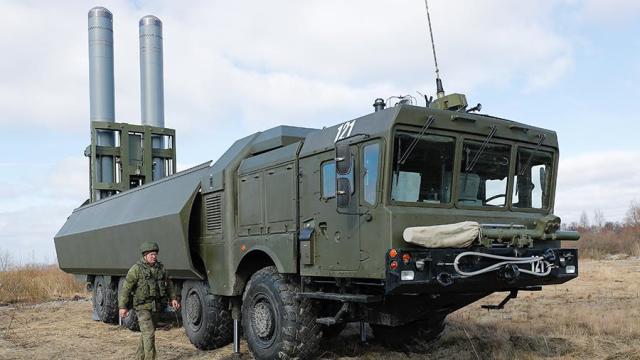The Baltic region will receive a missile "shield and sword". The Ministry of defense decided to increase the coastal forces in Kaliningrad. Next year, a division of unique Bastion supersonic systems will be deployed there. They are capable of hitting targets at a distance of up to 600 kilometers. Their appearance was a response to the strengthening of the NATO grouping in Europe. If necessary, coastal complexes will be able to hit not only ships, but also work on NATO ground bases.
The Baltic region will receive a missile "shield and sword". The Ministry of defense decided to increase the coastal forces in Kaliningrad. Next year, a division of unique Bastion supersonic systems will be deployed there. They are capable of hitting targets at a distance of up to 600 kilometers. Their appearance was a response to the strengthening of the NATO grouping in Europe. If necessary, coastal complexes will be able to hit not only ships, but also work on NATO ground bases.
Baltic at gunpoint
The exact timing of the deployment of the complexes and their future locations are still being worked out. But a fundamental decision on the deployment of "Bastions" has already been made, sources told Izvestia in the military Department.
The coastal missile forces in the Kaliningrad region are represented by the 27th separate brigade. The appearance of new equipment there, and especially modern coastal missile systems (DBMS), has caused serious concern among neighboring NATO member countries. The unit is based in the village of Donskoye in the Svetlogorsk city district, 30 km from the regional center. This locality is located on the westernmost tip of the Zemland Peninsula, approximately at the same distance between the Northern and southern borders of the region.
This location allows you to control almost the entire water area of the Baltic sea adjacent to the Russian exclave, military historian Dmitry Boltenkov told Izvestia.
— In the 27th separate coastal missile brigade, two Bastion divisions and one armed with the Bal complex are already serving. Now this connection will be strengthened — - Boltenkov explained. — They will cover the entire Baltic sea. These complexes do not know mistakes and pose a serious threat to warships. And in the event of aggression against Russia, they can also strike at ground targets.
Bastion mobile coastal complexes are armed with onyx supersonic anti-ship missiles capable of hitting targets at a range of up to 600 km. They are helped to find the enemy by planes, targeting helicopters with radar systems, ships and submarines, with which the DBK is combined into a single information loop.
Coastal complexes can destroy both single ships and watercraft as part of amphibious formations, convoys, and carrier strike groups.
Also, due to the radar homing head, Bastion missiles can hit ground targets with special accuracy. At the same time, the range of the missile is even greater than that of the land-based Iskander.
The experience of Syria has shown that Bastions work well for stationary and" limited mobility " ground targets — control points, radar stations, airfields, helicopter pads and artillery batteries.
Region of special significance
In 2018, MQ-9 reconnaissance drones of the 52nd expeditionary operating group of the US air force were deployed in Poland on the border with the Kaliningrad region. Their equipment is capable of automatically detecting and mapping military radio sources on an electronic map of the area. Air group were also temporarily transferred the technique to Romania and Estonia. The Pentagon does not hide the fact that the task of the unit was to constantly monitor Russian military activity in the Baltic and around Kaliningrad. Almost every VKS flight in this region is accompanied by NATO fighters on duty at the airfields of the Baltic States. At the same time, the Baltic States regularly accuse the Russian aerospace forces of violating borders.
— Russia has vulnerable areas, which include the Kaliningrad region, — told "Izvestia" head of the Department of management and social technologies of the North-West Institute of Ranepa Inna Vetrenko. — The international situation is unstable, and nothing has been happening in relations with NATO and the EU for a long time. In these circumstances, the strengthening of the military contingent is a logical step aimed at protecting Russia from the Western direction. Recently, there has been the same unhealthy activity around the exclave as around the Kuril Islands. This is not always on the information agenda, but the situation in these areas is constantly alarming. We can also recall regular statements by politicians in certain countries who say that the Kaliningrad region allegedly does not rightfully belong to Russia, and so on. Such voices are heard, for example, in Germany. The issue was raised in the EU and Poland. If such statements are made, it is not for nothing. They can be followed by actions, so it is very important to strengthen the Russian exclave from all sides.
Izvestia has already reported that the defense Ministry will send coastal complexes " Bal " to the Baltic coast near St. Petersburg. This system is designed to protect the coast and Straits, as well as cover naval bases. It has the ability to fire single missiles and volleys of up to 32 subsonic missiles. After reloading (takes 30-40 minutes), the complex is ready to make a second salvo. DBK is a mobile system based on the MZKT-7930 chassis. It includes up to two self-propelled command posts, up to four launchers with eight x-35/X-35U cruise missiles, as well as transport and reloading vehicles.
The range of the DBK is more than 120 km. The complex is equipped with night vision devices and modern equipment. Thanks to the latest navigation system, Bal can quickly change starting positions. The deployment time is only 10 minutes.



